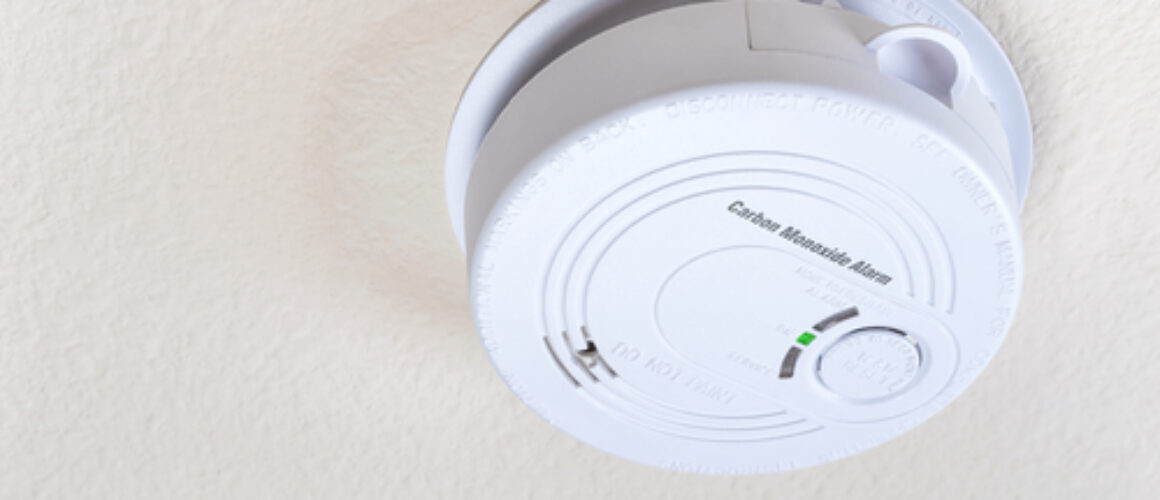The Role of Carbon Monoxide Detectors in Home Safety
Welcome to the Electrical Discounted Supplies blog, where we bring you valuable information about electrical safety and home protection. In this post, we will explore the importance of carbon monoxide detectors and how they play a vital role in safeguarding your home and loved ones. From choosing the right detector to proper installation and maintenance, let’s dive into everything you need to know about keeping your home free from the dangers of carbon monoxide.
The Importance of Carbon Monoxide Detectors
Carbon monoxide detectors are essential for home safety. These devices, such as the AICO alarms available from our store, alert occupants to the presence of this deadly gas. Without a detector, carbon monoxide can go undetected and lead to severe health issues or even death. Installing a reliable alarm is crucial in protecting your family and giving you peace of mind.
How Carbon Monoxide Detectors Work
Carbon monoxide (CO) is a colourless, odourless gas that can be extremely dangerous if inhaled. It is produced by the incomplete combustion of carbon-based fuels such as gas, oil, or coal. Due to its invisible nature, it is crucial to have reliable detectors in our homes to protect us from this silent killer.
Sensing Technology Used in Detectors:
Carbon monoxide detectors use advanced sensing technology to detect the presence of CO in the air. Most commonly, these detectors employ electrochemical sensors that can accurately measure the concentration of carbon monoxide molecules. When CO levels reach a dangerous threshold, these sensors trigger an alert mechanism.
Understanding the Alert Mechanisms:
When a carbon monoxide detector senses high levels of CO gas, it activates an alarm system designed to warn occupants and prompt them to take immediate action. These alarms typically emit loud audible alerts combined with visual indicators such as flashing lights or digital displays. Some advanced models also come with smart features that allow you to receive real-time notifications via smartphone apps like Amazon Alexa for added convenience and peace of mind.
Why Every Home Needs a Carbon Monoxide Detector
The dangers of carbon monoxide poisoning cannot be underestimated. This odourless and colourless gas can have lethal consequences if not detected in time. Sources of carbon monoxide in homes include faulty heating systems, blocked chimneys, and even everyday appliances like stoves and water heaters. Protecting your family is paramount, and a carbon monoxide detector is the best way to do so.
Choosing the Right Carbon Monoxide Detector
Types of Carbon Monoxide Detectors: There are two main types of carbon monoxide detectors – plug-in and battery-operated. Plug-in detectors are more reliable as they have a constant power source, while battery-operated ones are convenient for areas without electrical outlets.
Factors to Consider When Choosing a Carbon Monoxide Detector: When choosing a carbon monoxide detector, consider the size of your home and the number of rooms that need coverage. Look for features like digital displays and audible alarms for easy detection. Additionally, opt for detectors with long-lasting batteries or backup power sources to ensure continuous protection in case of power outages.
Types of Carbon Monoxide Detectors
Battery-powered carbon monoxide detectors provide a portable and flexible option for home safety. They are easy to install and can be placed anywhere in the house, making them ideal for renters or those who frequently change residences. These detectors rely on batteries to function, ensuring continuous monitoring even during power outages.
For a more permanent solution, plug-in carbon monoxide detectors offer convenience and reliability. They plug directly into electrical outlets, eliminating the need for battery replacements. This type of detector is especially suitable for homeowners who prefer a hassle-free setup and want their devices to operate continuously without interruption.
Hardwired carbon monoxide detectors are integrated into the home’s electrical system, providing seamless operation and consistent protection. Connected directly to the mains supply, these detectors do not require batteries or regular maintenance checks. Hardwired detectors are an excellent choice for new construction projects or homeowners looking for long-term peace of mind.
Factors to Consider When Choosing a Carbon Monoxide Detector
Sensor technology is a crucial factor to consider when choosing a carbon monoxide detector. Opt for detectors that use advanced sensors, such as electrochemical or biomimetic sensors, which offer higher accuracy and sensitivity in detecting low levels of carbon monoxide.
Another important consideration is the power source options available for the detector. Look for models that offer both battery-powered and hardwired options. Battery-powered detectors provide flexibility in terms of installation locations, while hardwired detectors ensure constant power supply without worrying about changing batteries.
Alarm features are also worth considering when selecting a carbon monoxide detector. Choose models with multiple alarm modes, including audible alarms, visual indicators (such as LED lights), and smartphone alerts via Wi-Fi connectivity. Additionally, look for detectors with built-in digital displays that show real-time CO levels for added convenience and peace of mind.
Installing and Maintaining Carbon Monoxide Detectors
Installing and maintaining carbon monoxide detectors is crucial for home safety. When installing, it’s important to place the detectors in optimal locations throughout the house, such as near bedrooms and fuel-burning appliances. Regular testing and maintenance are also essential to ensure that the detectors are functioning properly at all times. This includes checking batteries, replacing expired units, and cleaning any dust or debris that may accumulate over time.
Carbon monoxide detectors play a vital role in protecting your home from this invisible threat. By following proper installation guidelines and regularly maintaining these devices, you can have peace of mind knowing that you’re taking proactive steps towards safeguarding your family’s well-being.
Proper Placement of Carbon Monoxide Detectors
Choosing the right locations for carbon monoxide detectors is crucial. Place them near bedrooms and common living areas to ensure early detection. Avoid areas where airflow may be obstructed, such as behind curtains or furniture, as it can affect the detector’s accuracy. Installing detectors near potential sources of carbon monoxide, like gas appliances and heating systems, enhances their effectiveness in detecting harmful levels of gas.
Remember: Proper placement of carbon monoxide detectors saves lives.
Testing and Maintaining Carbon Monoxide Detectors
Regularly testing the functionality of carbon monoxide detectors is essential for ensuring their effectiveness in detecting harmful gases. It is recommended to test the detectors at least once a month by pressing the test button and verifying that it emits a loud alarm sound.
To maintain optimal performance, replacing batteries and checking the power supply regularly is crucial. Changing the batteries twice a year or as indicated by low battery alerts will help ensure the continuous operation of the carbon monoxide detector. Additionally, inspecting the power supply connection for any loose connections or signs of damage is important.
Cleaning and inspecting detectors on a regular basis helps keep them in good working condition. Use a soft cloth to gently wipe away dust and debris from both sides of the detector’s vents. Inspect for any physical damages such as cracks or dents that may affect its performance.
Conclusion
Having carbon monoxide detectors in your home is crucial for ensuring the safety of you and your loved ones. These devices are easy to install and provide constant monitoring, alerting you to any potential carbon monoxide leaks. When choosing a detector, consider factors such as sensor type, power source, and additional features to find one that suits your specific needs. The benefits of having carbon monoxide detectors include early detection of leaks, peace of mind knowing that your home is protected from this silent threat, and potentially saving lives by preventing CO poisoning incidents. Don’t underestimate the importance of these life-saving devices – make sure you have them installed in your home today.




